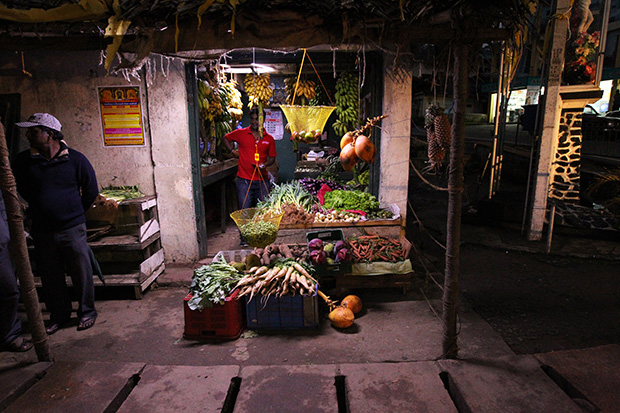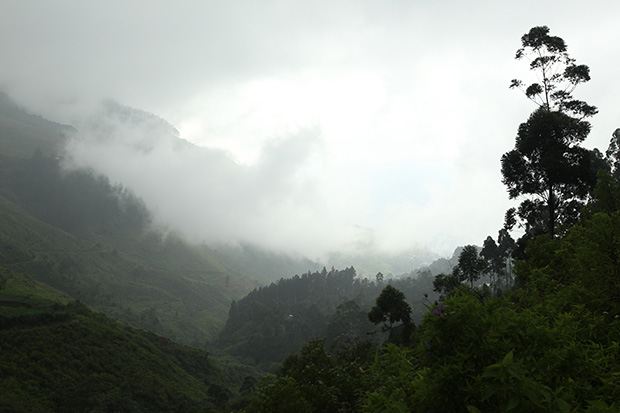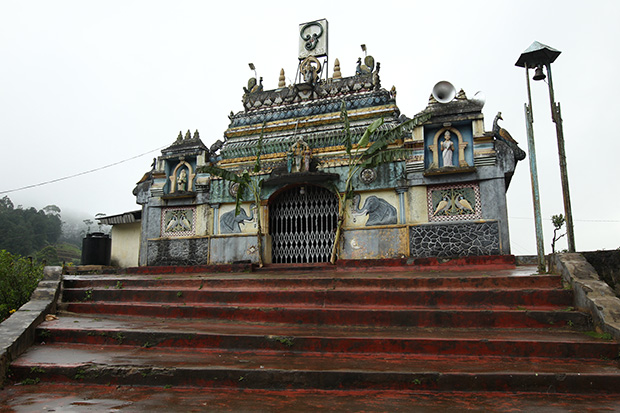You can enhance your travel photography by creating your own photojournalistic assignments. Robert Keeley tackled an assignment on a trip of Sri Lanka.
On a recent busy trip to Sri Lanka I had a spare afternoon which happened to coincide with a spectacular drive up the mountainous, twisting highway between the regional capital of Kandy and the commercial tea-growing centre of Nuwara Eliya. The road into this former British colonial outpost is tight and full of switchbacks, and it presented continually changing, dramatic vistas.
In the overcast and rainy conditions in which our bus made this steep climb the landscape was full of foreboding and photo opportunities. It would have been easy to take a few moody snaps and move on. But when we arrived at Nuwara Eliya at the top of the mountain I determined I could make more of it photographically as a personal photojournalistic assignment. I hired a tuk tuk (local three-wheeled trikes which can carry three passengers and which have local drivers), and I decided to head back down the road to record it in a more coherent fashion.
01 Preparation
Ideally for any photojournalistic assignment you should have done some preparation and research beforehand. Read up on your chosen area, its history and commercial interests and politics, and check out any existing images of the region in tourist brochures and on Google Images. This will give you some basic starting parameters (and possibly eliminate some of the more clichéd images which might have already been overused!).
In my case a busy schedule before my trip had limited me to a partly read volume about Sri Lanka from Lonely Planet! But I did have the distinct advantage of having just travelled along the road I wanted to shoot, keeping a mental tab of points of interest along the way. I determined that there was lots of photographic potential in the landscape, the people, and what I call the built environment. As well, the road itself (and the traffic moving along it) offered some great subjects.
02 Shooting the locals
In any travel destination photographers need to assess quickly how accessible the locals might be to having their pictures taken. In some places the locals can be hostile or indifferent to photographers. I was fortunate that in Sri Lanka they were very amenable to having their pictures taken. As I travelled along the precipitous highway, there were limited opportunities to pull over. But lots of locals travel by foot up and down the mountain, so when I saw an interesting subject I’d tap my driver on the shoulder, jump out, and indicate with my camera as to whether I could photograph them. Most were happy to comply, but when somebody declined I never pushed the point too far and I moved on.
There would always be another potential subject along the road, with many small stall holders working roadside, as well as plantation workers and small children selling flowers. I photographed them all at different points. And I made a point of showing them their images afterwards, simply as a courtesy.
03 Made-made environment
One the most prominent aspects of this fascinating road is the environment which has built up around it. As a key transport route for the tea industry in the surrounding hills, there are several large tea factories present, but also many small villages for the workers, made up of primitive brick, concrete, or even timber shanties. The roadside stalls added another element, and finally there were massive coloured billboards at many corners along the way.
Photographing these added plenty of variety to my coverage. In attempting any photojournalistic style shoot overseas it’s important to balance images of the local populace with coverage of the environment in which they operate. On the road to Nuwara Eliya I was fortunate that the surroundings were as fascinating as the people.
04 Search for extras
Every photojournalistic assignment can benefit from something extra, and you can usually find it if you stay alert to all the possibilities. On my trip I kept querying my driver if something of interest appeared, and although he only had very limited English as one point he explained we were passing a Hindu temple. The ornately decorated structure disappeared as we drove on, but on the return journey I asked him to pull into the small village surrounding it.
Not only did I secure some interesting images of the closed temple in the dark, foreboding weather, I then walked around the village and captured some images of the local workers, who were all amenable to me shooting them up close. In the poor, drizzingly weather I opted to work only with my 16-35mm wide-angle lens, so by necessity I had to move in close to my subjects. If they appeared agitated I’d immediately back off, but I was perhaps fortunate that most Sri Lankans seem to have a mild disposition and they rarely seemed too concerned by my presence.
05 Conclusion
Opting for a more photojournalistic approach to your travel photography of necessity requires a higher level of interaction with the local population. But that can be its own reward. If you’re not prepared to take this approach, and you’re simply after snapshots of local highlights, it’s best not to pursue it. The less interactive style can still produce some fine pictures which will leave you with good memories. But if you are more serious about developing your photographic style, taking a photojournalistic approach can present some great technical and practical challenges which should do a lot to lift your personal standards of craftsmanship. If you’re up for the challenge do not shirk it – the rewards in your images and your learning will definitely make it worth the effort. And you’ll meet some interesting people along the way!
For more detailed coverage of this subject see Robert Keeley's story in an upcoming issue of Australian Photography + digital magazine.
I came across this local tea plantation worker as he exited one of the slopes and he readily consented to being photographed. If the locals exhibited reluctance, I simply moved on.
As evening closed in on the top-of-the-range former British colonial township of Nuwara Eliya, which relies on tea and tourists, I wandered the main shopping strip to photograph some local stores. I shot handheld, but I braced carefully and used a slow shutter speed and a high ISO.
Areas along the Tea Road which weren't cultivated presented a wild and rugged landscape, which all added to the overall coverage.
Where tea plantations dominated, the villages of local workers were scattered amongst them. The plantations often positioned large and imposing signs on the hills of their properties.
All along the Tea Road there were small stalls selling produce and drinks. I photographed many of them, some with the owners, to add to my coverage.
At one point I got my tuk tuk driver to pull off the highway into a small village. I photographed this rain-soaked Hindu temple along with some of the workers in the village.








